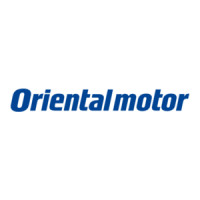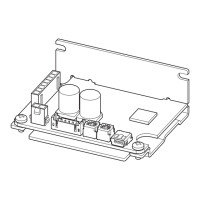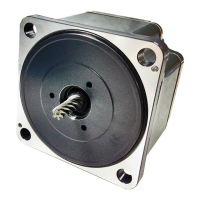9 Troubleshooting and remedial actions
−49−
Phenomenon Estimated cause Measure
Incorrect CW/CCW input or
faulty connection.
The motors driven in the CW
direction when the CW/CCW input
is set to the ON. CCW direction
when the CW/CCW input is set to
the OFF.
Speed reduction ratios 30:1,
50:1 and 100:1 are used in
the combination type
parallel shaft gearhead, or
20:1 and 30:1 are used in
the geared type.
When these speed reduction
ratios are used, drive direction is
opposite to that of the motor.
Reverse the CW/CCW input
operation.
The motor is
driven opposite
of the specified
direction.
A combination type hollow
shaft gearhead is used.
With a combination type hollow
shaft flat gearhead, the rotating
direction will vary depending on
whether the motor unit is viewed
from the front or rear of the
gearhead (P.40).
The motor (gearhead)
output shaft and load shaft
are not aligned with each
other.
Make sure that the motor
(gearhead) output shaft and load
shaft are connected in an
appropriate manner.
• The motor
does not run.
• Motor
vibration too
great.
Affected by noise.
Check for running only with the
motor, driver and external
potentiometer required for running.
If noise influence has been
confirmed, take the appropriate
measures such as separation from
noise generating source,
re-connection of wiring,
replacement of the signal cable by
a shielded cable, and installation
of a ferrite core.
The motor is stopped by
START/STOP input.
Stop the motor by RUN/BRAKE
input.
Load inertia may be
excessive.
For this check, increase the
frictional load or reduce the load
inertia.
The motor fails
to stop
instantaneously.
The deceleration time is too
long.
Check the setting of the
acceleration/deceleration time
potentiometer.

